-
Deadly storms spark rush for storm shelters
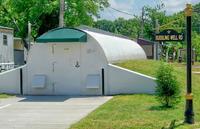
The recent spate of severe storms that have devastated the south and mid-west, has sparked a sharp increase in the demand for storm shelters; in April, one particularly devastating storm spawned a record 226 tornadoes in one day, bringing that week’s total to 312; demand has skyrocketed and companies that sell secure shelters designed to withstand powerful storms are scrambling to keep pace; one company is installing more than forty shelters a day around the country; storm shelters can cost anywhere from $3,000 to tens of thousands of dollars depending on the quality of construction; the Federal Emergency Management Agency (FEMA) has been encouraging states to use federal disaster aid money to encourage homeowners to purchase storm shelters by offering subsidies
-
-
Japan earthquake to increase quake risk elsewhere in the country
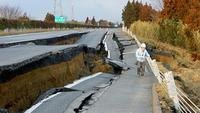
Japan’s recent magnitude 9.0 earthquake, which triggered a devastating tsunami, relieved stress along part of the quake fault but also has contributed to the build up of stress in other areas, putting some of the country at risk for up to years of sizeable aftershocks and perhaps new main shocks
-
-
Smartphone apps help thousands in latest storms
In the recent string of natural disasters to hit the Midwest, emergency communication smartphone apps have proven invaluable for contacting family members and first responders; during these natural disasters, telephone lines and cell phone towers are often inundated with traffic, leaving individuals unable to contact their loved ones or even reach 911; thanks to smartphone apps like Life360, individuals have been able to contact family members to let them know they are okay, or alert emergency workers if they are in trouble; during the floods that left Memphis, Tennessee under water, more than 2,400 families used the app to share their locations and confirm their safety
-
-
More tornadoes kill at least thirteen in three states
Residents of Joplin, Missouri were hit by another storm Tuesday night killing another thirteen people across three states just two days after a deadly tornado swept through the town killing at least 117 people with more than 1,500 still unaccounted for; Joplin received a small break, as the latest storm hit Oklahoma the hardest and no tornadoes were reported near the town; so far five people have been confirmed dead in Oklahoma, but officials expect the death toll to rise as rescue workers comb through the wreckage; at least sixty people have reported injuries; in addition four people were reported dead in Kansas and Arkansas
-
-
More tornadoes headed to Joplin, Missouri
As emergency responders pick through the wreckage from Sunday’s massive tornado in Joplin, Missouri, residents are preparing for another monstrous storm that could generate more deadly tornadoes; meteorologists anticipate that thunderstorms will hit Joplin once again on Tuesday night; rescue workers raced to sift through the rubble in search of survivors before the next storm hits; it is estimated that 30 percent of the city has been destroyed after the tornado carved a three-quarter mile wide path of destruction; so far officials have confirmed that at least 117 people are dead, more than 600 injured, and approximately 1,500 are still missing from one of the country’s deadliest tornadoes in over sixty years; initial projections rate the monstrous tornado as an EF-4 with wind speeds of 166 to 200 miles per hour; it is reported that the mile-wide funnel contained two cyclones inside; President Obama is currently overseas in the United Kingdom, but plans to visit Missouri this weekend after returning from Europe
-
-
Western states could face disastrous floods from record snowpacks
Western states could soon face disastrous floods like the Midwest due to record snowpacks; heavy winter storms and an abnormally cold and wet spring have resulted in record snow levels for May in states across the west including Montano, New Mexico, Colorado, and California; officials worry that if June is particularly hot and sunny, the snow could melt too quickly and inundate the region’s rivers with torrents of water; officials are particularly concerned about flash floods as they can occur with little warning; officials are bracing for the worst holding emergency drills and releasing thousands of gallons of water to make room in reservoirs
Western states could soon face disastrous floods like the Midwest due to record snowpacks -
-
Tornado kills at least 116 in Joplin, Missouri
Residents and emergency responders are searching for survivors in Joplin, Missouri after a tornado tore through the town Sunday evening; the tornado tore a 6-mile-long, half-mile wide path through the middle of town; much of the city’s south side was leveled, with churches, schools, businesses, and homes reduced to ruins by winds of up to 165 mph; so far 116 people have been found dead, and officials expect the death toll to rise; officials have estimated 2,000 buildings were damaged; among the ruined buildings is St. John’s Regional Medical center, the city’s major hospital; the hospital was struck directly by the tornado and lost portions of its roof, façade, and windows; the Joplin twister was one of 68 reported tornadoes across seven Midwest states over the weekend
-
-
Local emergency responders in Michigan could receive new radio system
Local emergency responders in Michigan could soon be receiving new communication equipment to connect with other nearby agencies; city councils in Grosse Pointes and Harper Woods are currently considering whether to purchase new radios to replace their aging 800 MHz system; a $485,000 DHS grant could help fund the purchase of the new radios which would cost more than $1 million to purchase
-
-
Risk of wetland habitat loss in southern United States
Between 1992 and 1997, more than 500,000 acres of wetlands were lost in the United States; 75 percent of those losses were attributed to development or agriculture; the greatest loss during this period occurred in the southern United States, with development as the main reason for wetland habitat loss; wetlands are important not only as a habitat for wild life, but as a line of defense against catastrophic floods and intense storms
-
-
Using river sediment to repair the coast

The water of the Mississippi River swells beyond levees and flood-control barriers, flooding large areas, destroying costly infrastructure assets, and inflicting economic harms; not all is bad, though: large floods like the current one carry huge quantities of sediment that eventually deposit on the riverbed, making the river shallower, or are carried out to the Gulf of Mexico; the vast amount of water going south will replenish Louisiana’s coastal wetlands, and the sediment carried by the water will restore long stretches of eroding coastline and rebuild barrier islands in the Gulf
-
-
Scientists detonate underground bombs in California for earthquake research
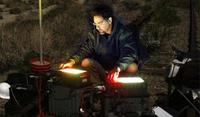
To study California’s fault lines, researchers recently detonated explosives underground to create 3D models of seismic activity; a team of geologists and seismic experts travelled to areas in the Imperial and Coachella Valley, roughly 150 miles northeast of San Diego, California, to study the southern tip of the San Andreas Fault; a team detonated more than 120 explosives more than sixty feet deep to set off seismic waves; the team measured these wave patterns with 3,000 different sensors to create a 3D map in these fault areas; their work comes as part of the Salton Seismic Imaging Project
-
-
Disaster relief innovation: concrete tent
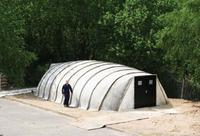
Among innovations which could help relief efforts following major disasters is a fabric shelter that, when sprayed with water, turns to concrete within twenty-four hours; the system works by impregnating cement particles into a fabric from which the tent is made; when the folded tent arrives at the disaster area, it is unrolled, tacked down with stakes, and then filled with air via a fan; once in place, the tent is soaked with water and then left to dry for twenty-four hours; once the concrete hardens, the tents can last for up to ten years; the tents come with installable doors, and since the walls are hard, electrical outlets and plumbing pipes can also be installed
-
-
Barge traffic resumes on Mississippi River

On a typical day, some 600 barges move back and forth along the Mississippi, with a single vessel carrying as much cargo as 70 tractor-trailers or 17 rail cars; the barges haul coal, timber, iron, steel, and more than half of America’s grain exports; interruptions of barge traffic could thus cost the U.S. economy hundreds of millions of dollars for each day the barges are idled; early Tuesday the Coast Guard halted barge and cargo haulers traffic along a 15-mile stretch of the river near Natchez, Mississippi; the Coast Guard and the Army Corps of Engineers were worried that the heavy wake churned by barges and cargo haulers increase the pressure on levees which are already straining to hold back the rising river; on Tuesday night the Coast Guard re-opened the blocked section, and barges were allowed to go through but only one at a time, and at a very low speed
-
-
Japanese government anticipated tsunami's effects at nuclear plants
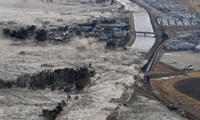
Growing evidence suggests that the Japanese government and Tokyo Electric Power (TEPCO) ignored clear warnings that infrastructure at the Fukushima Daiichi power plant would be damaged in the event of a massive earthquake; Japan’s Mainichi Daily recently obtained government documents that indicate a government research group clearly outlined the effects of tsunamis on nuclear plants; as TEPCO battles to contain the radiation spewing from the Fukushima Daiichi reactors, the power company and the government have insisted that the 11 March earthquake and tsunami that knocked out cooling systems at the Fukushima Daiichi plant was well beyond their expectations
-
-
Fukushima lessons for U.K.'s nuclear industry
An interim assessment of the implications of the nuclear crisis in Japan concludes there is no need to curtail the operations of nuclear plants in the United Kingdom but lessons should be learnt; the report identifies twenty-five recommended areas for review — by either industry, the government, or regulators — to determine whether sensible and appropriate measures can further improve safety in the U.K. nuclear industry; these include reviews of the layout of U.K. power plants, emergency response arrangements, dealing with prolonged loss of power supplies, and the risks associated with flooding
-
More headlines
The long view
Using Drone Swarms to Fight Forest Fires
Forest fires are becoming increasingly catastrophic across the world, accelerated by climate change. Researchers are using multiple swarms of drones to tackle natural disasters like forest fires.
How Climate Change Will Affect Conflict and U.S. Military Operations
“People talk about climate change as a threat multiplier,” said Karen Sudkamp, an associate director of the Infrastructure, Immigration, and Security Operations Program within the RAND Homeland Security Research Division. “But at what point do we need to start talking about the threat multiplier actually becoming a significant threat all its own?”
